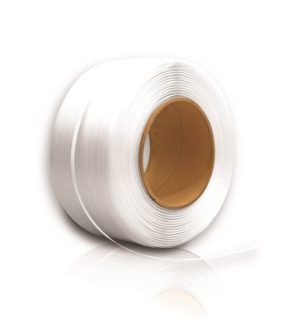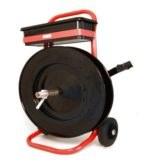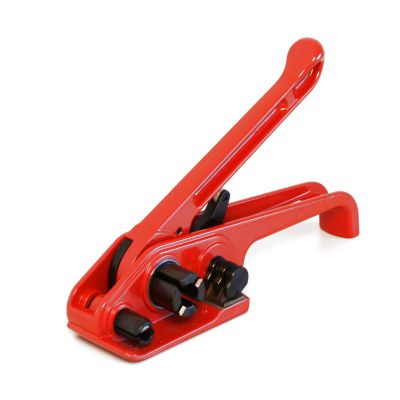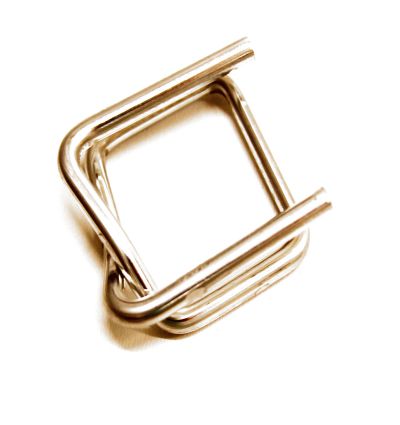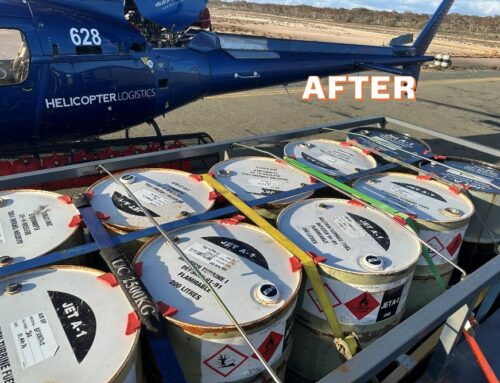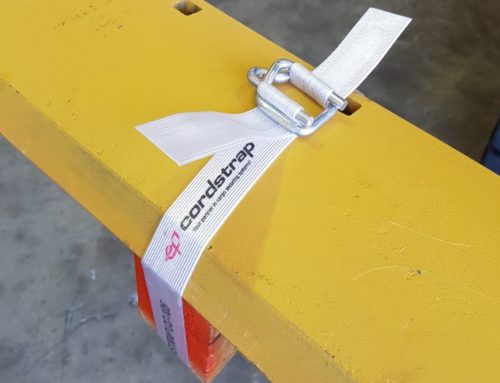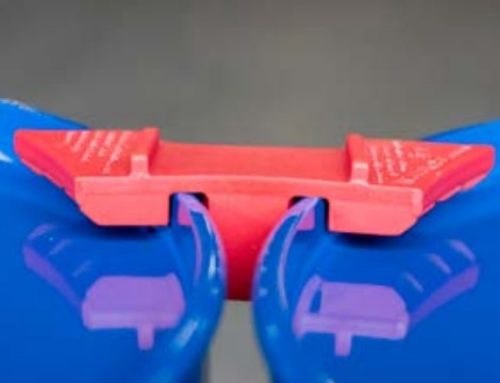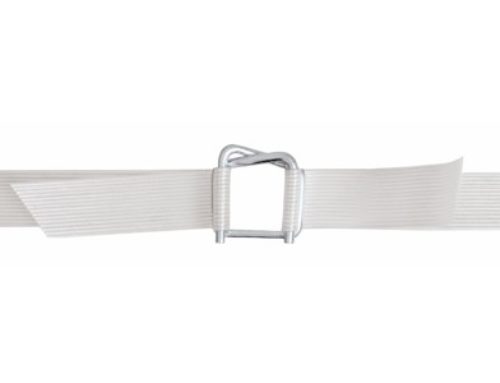Composite Strapping vs. Steel Strapping
Case Study Australian Leading Home- and Hardware Store
One of Australia’s leading home and hardware stores asked for our assistance with their project to eliminate steel strapping on inbound products. In the past various staff members had been seriously injured when cutting inbound steel strapping. To increase workplace safety at their distribution centres and eliminate these steel strapping related incidents, the goal was to eliminate all inbound steel strapping. They had already succeeded in drastically reducing the amount of inbound steel strapping. However, certain suppliers had concerns due to the nature of their product or applications and claimed they had no other alternative besides steel strapping.
The main concerns of these suppliers
There is no strap that is stronger than for steel strapping
There is no strap that holds our packs as tight as steel strapping
Non-metallic strapping cannot withstand chemical treatment
Non-metallic strapping cannot withstand the temperatures produced in dry-kiln
Cost increase of consumables
We were invited on the project to refute these concerns based on scientific based evidence and to provide a comparison between steel strapping and composite strapping.
This article is a summary of the comparison of steel strapping versus composite strapping. Please note that the facts regarding the composite strapping in this project are based on Cordstrap composite strapping. We don’t have facts and figures of other composite strapping manufacturers, and the facts given below might not apply to their product! The full and detailed report is available per request. Just contact us if you are interested in it.
Composite Strapping
Size for size, Composite Strapping is stronger than steel strapping. Composite Strapping is made from polyester yarns which are embedded in a PP-coating. The high tenacity polyester yarns are the core of this system and provide the strength. The coating holds the yarns together and creates high friction in the joint.
Benefits of this coating are
- no splitting
- stiffens the strap
- weather resistant to hot/cold weather
- can be printed
- high retained tension
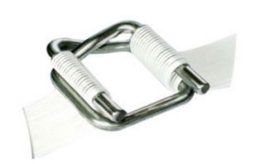
Composite Strapping
Strengths, Sizes, Pricing and Tooling
Composite Strapping is available in a wide variety of sizes and system strengths, ranging from 500daN up to 2,600daN. The system is closed with a steel (Cordstrap) buckle and provides the strongest joint closure of all strapping systems.
The system is tensioned with a manual, battery or pneumatic tool. Based on what we see in the market in Australia, composite strapping is usually comparable in price with steel strapping.
Tensioning tools are low-cost, low maintenance and durable. Long term cost savings are possible due to:
- the elimination of steel strap related accidents
- lower tooling cost
- reduction of additional packaging materials (to protect against the damaging effect of steel strap)
- reduction of personal safety equipment (gloves, glasses)
- ability to re-tension
- ability to re-use
Composite Strapping
Summary
Composite strapping provides consistent system strength. This is because of the joint closure, the buckle. The wire buckle is the strongest type of joint closure of all strapping systems and not dependent on the tool-quality or operator. The system is easy, fast and safe to apply with the low maintenance, low-cost manual tooling. Cordstrap is non-abrasive and can be applied directly to coated products.
Applying Composite Strapping
Materials you need
Composite strapping comes in coils with a 200mm core. Length per coil depends on the strap size. All strapping systems have their designated buckles that are also in-house manufactured by Cordstrap and provide optimum system strength.
To apply tension to the composite strapping system you need a tensioning tool that matches the width of your strap. We offer manual, battery and pneumatic strapping tools ranging in width from 20mm up to 60mm.
The easiest way to move your strap around in your work area is by using a strapping cart. This cart, or dispenser, keep all your tools and materials stored together. It is equipped with a brake to prevent de-coiling. Depending on the location of use, we offer a portable dispenser that is compact and can be easily taken to job sites. The mobile version works well in warehouses.
Composite Strapping
Benefits explained
- Stronger than steel strapping, size for size
You can have the strongest strap in the world, but if you have a weak joint you still end up with a weak system. Composite strapping does not depend on the tensioning tool or the operator to reach its best capacity. Therefore, composite strapping always reaches a consistent strength. With steel strapping, the strength of your system depends on the tool and the operator - Safe to use
Composite strapping has a soft texture and cannot cause bodily harm. Steel strapping is sharp and recoils when cut. This regularly causes injury. Composite strapping can be held while cutting the straps without any risk of being injured. - Lightweight
A full coil of composite strapping weighs approx. 10kg. Steel strapping weighs 5 times more for the same length. - Conforms to product
Composite strapping slides around corners. Steel banding bends around corners. Composite strapping creates, therefore, better-distributed tension around your product and conforms to any form or shape - Does not damage finished products
Composite strapping has a soft texture. There is no risk of abrasion as with steel strapping. Often protective packaging used to protect your products against the steel strapping can be eliminated. - Does not rust or rot
Composite strapping does not rust. The buckle is galvanised and does not get in direct contact with your product. Steel strapping rusts which can cause damage to your product or weakening of the system. - Over-tensioning warning
Composite strapping is designed in a way that the system shows you when you reach optimum tension. Upon closing of the buckle, you will see the peeling of the coating in the buckle which is an indication that optimum tension is reached. - Weatherproof
Composite strapping can be applied and used in temperatures between -30° up to 140° degrees. Weather does not affect the functionality of the composite strapping system. - Heat resistant
Heat is no problem for composite strapping. Only at temperatures above 285°C will decomposition in the presence of oxygen take place. Softening of composite strapping will take place at 125°C but has no negative influence. - Chemical resistant
Composite strapping is compatible with most chemicals that were or are used in the timber industry. - Uses simple, inexpensive, hand held tool
Only requires 1 tool. No separate crimper or cutter like most steel banding tools. There is minimal wear and tear because the composite strapping tools are made of steel and applied on a non-metallic strap. - High elongation recovery
Composite strapping is made of high tenacity polyester yarns which act like a very strong elastic material. It is capable of absorbing shocks during transportation without elongation. The memory capacity of Cordstrap is the highest in the market. - Re-usability
It is possible to reuse composite strapping materials. This provides significant cost savings. Despite the fact that you always have to cut the strap, you can re-use the strap around a smaller bundle. If you leave a slightly longer tail, you can reuse it around a bundle with the same diameter. - Re-tensioning
Composite strapping is able to expand and compress with your product (e.g. timber). If the compression is more than the elongation recovery you are able to re-tension the strap. This contributes to cost-savings as there is no need for new banding. - Easy to do small bundles
Even when your strapping surface is small, you can use composite strapping around very small bundles. Unlike with steel strapping tools, the Cordstrap tool does not require a large surface to place the tool on. If you don’t have a large enough surface to position the tool, you can use the nose of the tensioning tool and place it against your bundle.
Steel Strapping
The system is closed with a crimp, notch or seal-less joint. The joint strength depends on the tools being used and the person using the tool. If the tools are worn out or the user is not applying enough force, you end up with inconsistent strength in your systems. To apply steel, you usually need 3 tools, one tensioner, one crimper and one cutter. There are combination tools available that will do all. Combination tools are expensive and contain many parts which wear out and can break down. Steel strapping is dangerous to work with and causes work-related accidents.
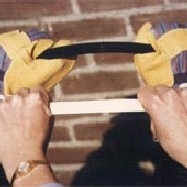
Steel Strapping
In summary
Steel strapping has high linear system strength (strap only). Steel strapping is dependent on crimper and tool for its system strength (strap + joint closure). System strength is therefore not consistent. Steel can be fast to apply. However, it is unsafe for workers and receivers. Due to its sharpness, it damages coated products.
Applying Steel Strapping
Materials you need
Steel strapping comes in 15kg ribbon wound coils and 45kg rope wound coils. The length per coil depends on the width and the thickness of the strap. Steel is often sold per kg and therefore not transparent price wise.
The most common joint to close the steel strapping system is a seal. The seal is squeezed around the edges of the steel strapping. Alternatively, you can use the more expensive “seal less” tool. This tool punches holes in the steel strapping and notches the two strap layers together. When using a seal, you need a tensioning tool and a crimper.
As with composite strapping, the easiest way to move your strapping in your work area is by using a strapping cart. For steel strapping there are varieties dependent on what type of rolls are being used.
To cut the steel straps you need a special steel strap cutter. Mostly steel snips are being used but the strap will fly. To cut steel strap safely, you can use the Tymer Steel Strapping Safety Cutter. This tool grips and holds the steel strapping in place while you cut it and prevents it from flying, or recoiling.
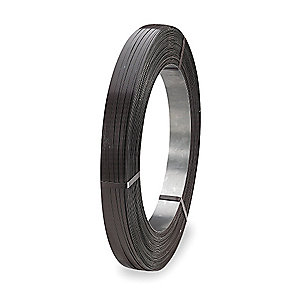
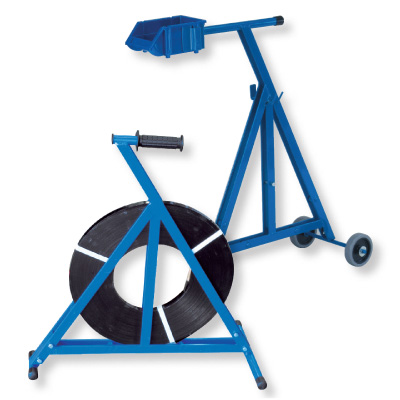



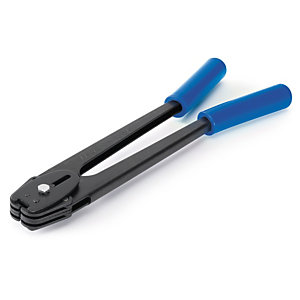
Steel Strapping
Properties
- Strong around the corners but can cut into your product due to the sharp edges
- High linear strength (strap only)
- System strength (strap + joint) depends on tool quality and operator
- Sharp and people cut themselves regularly
- Flies or recoils when cut, causing dangerous situations
- Tools wear out due to steel on steel contact
- Seals are flat compared with the composite strapping buckle which can be a benefit
- Heavy to move around
- No “recovery” and will break at elongation
- Not shock absorbent
- Disposing steel strap is not without risk
- Has no stretch which can be a benefit in certain applications
- People have used it for a long time and change can be scary
- Steel rusts which can cause damage to the cargo
- Receivers of materials with steel strapping need special tools to cut the strapping


